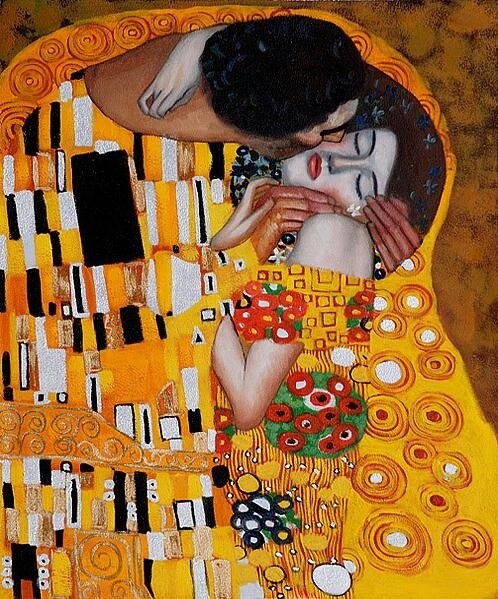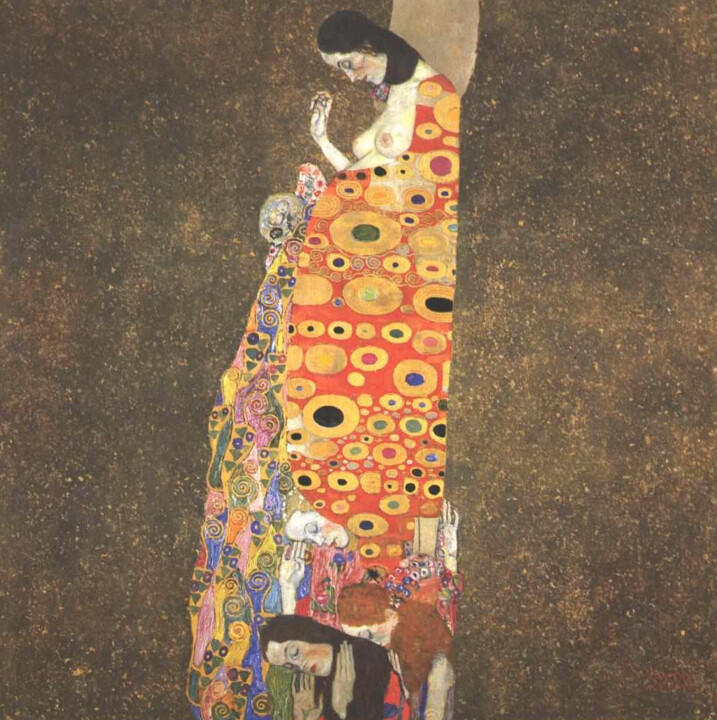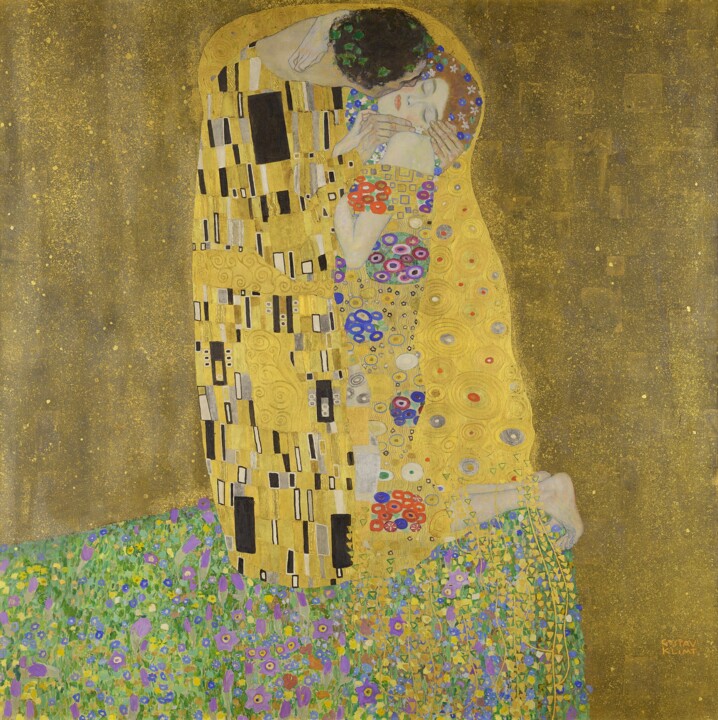 Gustav Klimt - The Kiss, 1907–1908. Oil on canvas. 180 × 180 cm. Österreichische Galerie Belvedere
Gustav Klimt - The Kiss, 1907–1908. Oil on canvas. 180 × 180 cm. Österreichische Galerie Belvedere
Who was Gustav Klimt?
Gustav Klimt (1862-1918) was an Austrian painter and one of the most prominent members of the Vienna Secession movement, which sought to break away from the traditional academic style of art and embrace more modern and avant-garde approaches. Klimt is known for his distinctive style, characterized by ornate patterns, gold leaf, and erotic imagery.
Klimt was born in Vienna and began his artistic training at the Vienna School of Arts and Crafts. Along with his brother and a friend, he formed the artistic collective known as the "Company of Artists," which later evolved into the Vienna Secession. Klimt's early work was heavily influenced by the Arts and Crafts movement, as well as the work of the Symbolist painters.
In the 1890s, Klimt began to develop his signature style, characterized by intricate patterns, gold leaf, and erotic imagery. His most famous works include "The Kiss," "Judith and the Head of Holofernes," and "Adele Bloch-Bauer I." These artworks often depicted sensual and erotic scenes, and were sometimes controversial for their explicitness.
Klimt was a prolific artist, producing hundreds of works over the course of his career. He also helped to establish the Vienna Secession as a major force in the art world, and his influence can be seen in the work of many later artists. Klimt died in Vienna in 1918, at the age of 55, and is remembered as one of the greatest artists of the Art Nouveau and Symbolist movements.
 Gustav Klimt in 1887.
Gustav Klimt in 1887.
“The Kiss”
At the turn of the 20th century, a new artistic movement known as Art Nouveau was emerging in Europe. This movement was characterized by an emphasis on ornamental design, often inspired by natural forms, and a rejection of the academic traditions of art that had dominated the previous century.
Klimt was a leading figure in the Art Nouveau movement, and "The Kiss" artwork reflects many of the key characteristics of Art Nouveau, including the intricate patterns and decorative elements in the background, and the use of symbolism to convey deeper meanings. In addition to its artistic context, "The Kiss" was also created during a time of social and political change in Europe. In the years leading up to the painting's creation, tensions were rising between various European powers, culminating in the outbreak of World War I just a few years later.
"The Kiss" was created by Austrian artist Gustav Klimt in 1908. It is an oil painting on canvas that depicts a couple embracing in a field of flowers. The man is shown with a more somber expression, while the woman has her eyes closed, as if lost in the moment. Their bodies are intertwined, with the man's arm wrapped around the woman's waist and her hands resting on his shoulders.
The artwork is significant within the art world for a number of reasons. Firstly, it represents a key example of the Art Nouveau style, which was popular in Europe in the late 19th and early 20th centuries. The movement was characterized by a focus on decorative arts and intricate design, and "The Kiss" exemplifies these qualities.
Secondly, "The Kiss" is notable for its incorporation of gold leaf, which was a relatively uncommon technique at the time. The use of gold leaf adds a sense of opulence and luxury to the work, and also contributes to its enduring visual impact.
Finally, "The Kiss" is significant for its enduring popularity and cultural influence. It has been widely reproduced and imitated over the years, and has become an iconic image of love and romance in popular culture.
Overall, "The Kiss" is an important work of art that represents a significant moment in the history of the Art Nouveau movement, and has had a lasting impact on popular culture and artistic expression.
The artwork is housed in the Österreichische Galerie Belvedere museum in Vienna, Austria, where it continues to inspire and captivate viewers from all over the world.
Interpretations of "The Kiss"
"The Kiss" depicts a couple embracing in a passionate kiss. The man and woman are depicted in a stylized, almost abstract form, surrounded by ornate patterns and gold leaf. It is rich in symbolism and has been interpreted in a number of different ways.
One interpretation of the painting is that it represents the ecstasy of romantic love. The couple's embrace is passionate and intense, and the ornate patterns surrounding them suggest a sense of richness and opulence. The use of gold leaf further emphasizes this sense of luxury and indulgence.
Another interpretation is that it represents the meeting of the spiritual and the sensual. The woman's closed eyes and the man's contemplative expression suggest a sense of introspection and inner contemplation, while the sensual embrace represents a connection with the physical world.
Finally, some have interpreted it as a symbol of the artist's own creative process. The man and woman could be seen as representing the artist and his muse, and the painting itself could be seen as a representation of the creative act. The ornate patterns and gold leaf could be seen as a metaphor for the artistic process, with the artist transforming raw materials into something beautiful and meaningful.
Some feminist critics have interpreted “The Kiss” as a critique of societal norms and expectations around gender and sexuality. They argue that the woman's closed eyes and limp posture suggest a sense of submissiveness and passivity, and that reinforces harmful gender stereotypes.
Criticism
Like all works of art, "The Kiss" by Gustav Klimt has received some criticism over the years :
- Lack of originality: Some critics argue that the artwork is not particularly original, and that it borrows heavily from other artists and styles. For example, the use of gold leaf and intricate patterns has been compared to the work of Japanese artists, while the sensual subject matter has been likened to the work of French Symbolist painters.
- Excessive decoration: Others criticize the painting for being overly decorative, with the intricate patterns and gold leaf overwhelming the central figures and detracting from the emotional impact of the artwork.
- Objectification of women: Some feminist critics argue that it objectifies women, reducing them to passive objects of male desire. They point to the woman's closed eyes and limp posture as evidence of her submissiveness.
- Lack of depth: Finally, some critics argue that the painting lacks emotional depth and fails to explore the complexities of love and desire. They argue that the emphasis on surface decoration and sensuality comes at the expense of deeper emotional engagement.
Interesting facts about the painting
- Juxtaposition of the sexes: The two figures in the painting are often seen as representing opposite or complementary elements - male and female, light and dark, life and death. The man is dressed in geometric patterns and seems to be in a more active pose, while the woman's flowing robes and organic patterns suggest a more passive, receptive stance. Some critics have suggested that the painting is an exploration of the tension and harmony between these opposing forces.
- Symbolism: Klimt was known for his use of symbolism in his paintings, and "The Kiss" is no exception. The flowers in the background have been interpreted as representing the Garden of Eden or the life cycle of love. The woman's hair, which seems to blend into the background, has been interpreted as a symbol of the unity of the couple or the dissolution of the self in the embrace of love.
- Biographical references: While Klimt was not known for painting literal portraits, some have suggested that "The Kiss" contains references to specific people in the artist's life. For example, the woman's face is said to resemble that of Emilie Flöge, a close friend and frequent model for Klimt. Others have suggested that the man may be a self-portrait of the artist, or a representation of one of Klimt's artistic patrons.
“The Kiss” in popular culture
"The Kiss" has had a significant impact on popular culture, inspiring numerous works of art, music, and literature. The painting's iconic image of two lovers in an embrace has been reproduced in various forms, such as posters, prints, and even clothing.
The painting has been referenced in several films and TV shows, including the 2001 movie "Amélie," in which the protagonist imagines herself as the woman in the painting, and the painting is featured in several scenes throughout the movie. The painting also plays a key role in the plot of the 2015 film "Woman in Gold," which tells the story of Maria Altmann's fight to reclaim the painting from the Austrian government.
In music, "The Kiss" has inspired several songs, including "Kiss the Rain" by Yiruma and "Kiss Me" by Sixpence None the Richer. The painting has also been referenced in various works of literature, such as the novel "The English Patient" by Michael Ondaatje, in which the painting serves as a metaphor for the protagonist's love affair.
In the episode "The Shakespeare Code" (“Doctor Who", 2005), the Tenth Doctor describes the painting as "one of the greatest works of art ever produced" and claims to have "borrowed" the model for the woman in the painting. In the episode "The One with Ross's Teeth" ("Friends", 1997), Chandler makes a joke about the painting, saying "I thought it was a man and a woman, but it's actually a man and a woman made of gold leaf."

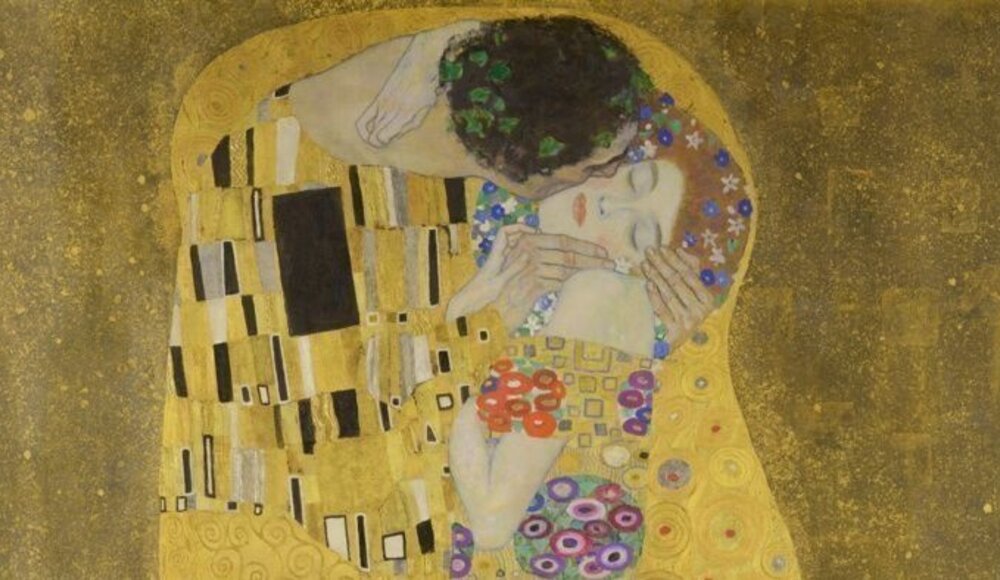
 Selena Mattei
Selena Mattei

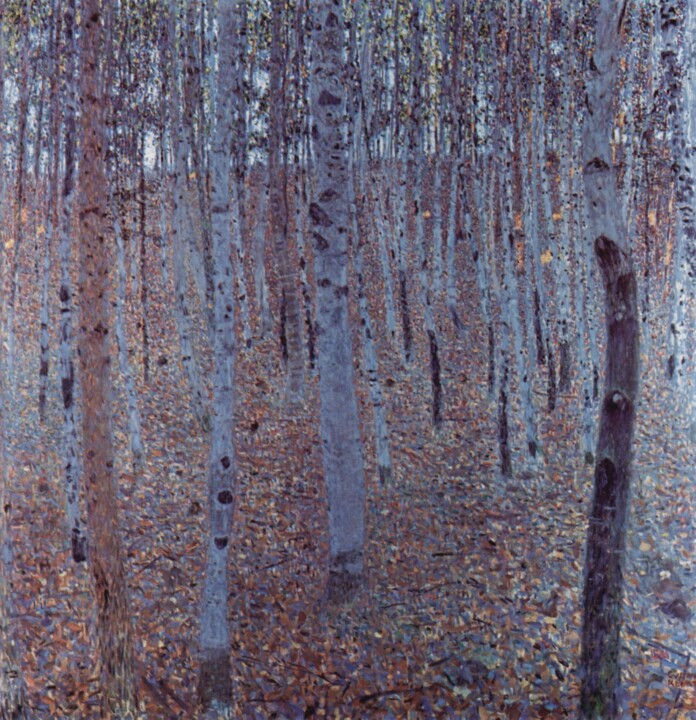
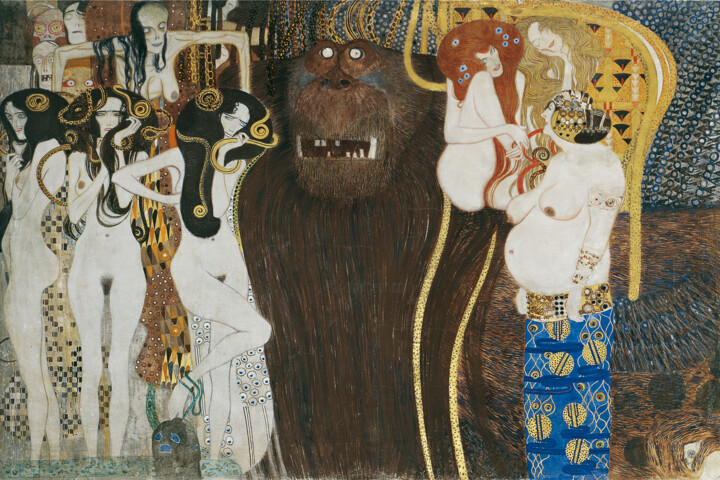
_-_image.jpg)

